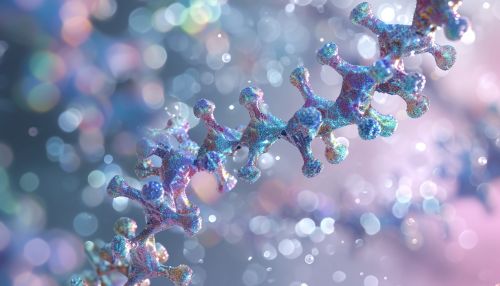Farnesyl diphosphate synthase
Overview
Farnesyl diphosphate synthase (FDPS) is a key enzyme involved in the mevalonate pathway, which is responsible for the biosynthesis of isoprenoids in organisms. This enzyme catalyzes the formation of farnesyl diphosphate (FPP), a crucial intermediate for the production of several important classes of biomolecules, including steroids, terpenes, and prenylated proteins.


Structure
The structure of FDPS is highly conserved across species, reflecting its fundamental role in cellular metabolism. The enzyme is a homodimer, with each monomer consisting of two domains: a large Rossmann fold domain and a smaller alpha-helical domain. The active site, where the catalytic reaction occurs, is located at the interface of these two domains.
Function
FDPS catalyzes the condensation of isopentenyl pyrophosphate (IPP) and dimethylallyl pyrophosphate (DMAPP) to form FPP. This reaction involves two sequential condensation steps, with the intermediate formation of geranyl pyrophosphate (GPP). The enzyme uses a divalent cation, typically Mg2+, as a cofactor to facilitate the reaction.
Biological Role
FPP, the product of the FDPS-catalyzed reaction, serves as a precursor for the biosynthesis of a wide range of isoprenoid compounds. These include cholesterol, a major component of cell membranes and precursor of steroid hormones; ubiquinone, an essential component of the mitochondrial electron transport chain; and dolichol, a lipid involved in protein glycosylation. In addition, FPP is used for the prenylation of proteins, a post-translational modification that influences protein localization and function.
Clinical Significance
Given its central role in isoprenoid biosynthesis, FDPS has been implicated in several diseases. For instance, dysregulation of FDPS activity has been associated with cancer, osteoporosis, and neurodegenerative diseases. Consequently, FDPS is considered a potential therapeutic target, and several inhibitors of the enzyme have been developed for clinical use.
